Best Archaeological Sites Around Cusco, Peru
Cusco isn’t just a city—it’s the heart of the Inca world, surrounded by some of the most breathtaking archaeological sites on Earth. Beyond the cobblestone streets and colonial plazas lie ancient fortresses, ceremonial centers, and mysterious terraces that reveal the genius of Andean civilization.
From the massive stone walls of Sacsayhuamán to the intricate fountains of Tambomachay and the legendary citadel of Machu Picchu, each site offers a glimpse into a culture that mastered engineering, astronomy, and agriculture.
Here’s a guide to the best archaeological sites around Cusco that you won’t want to miss on your trip.
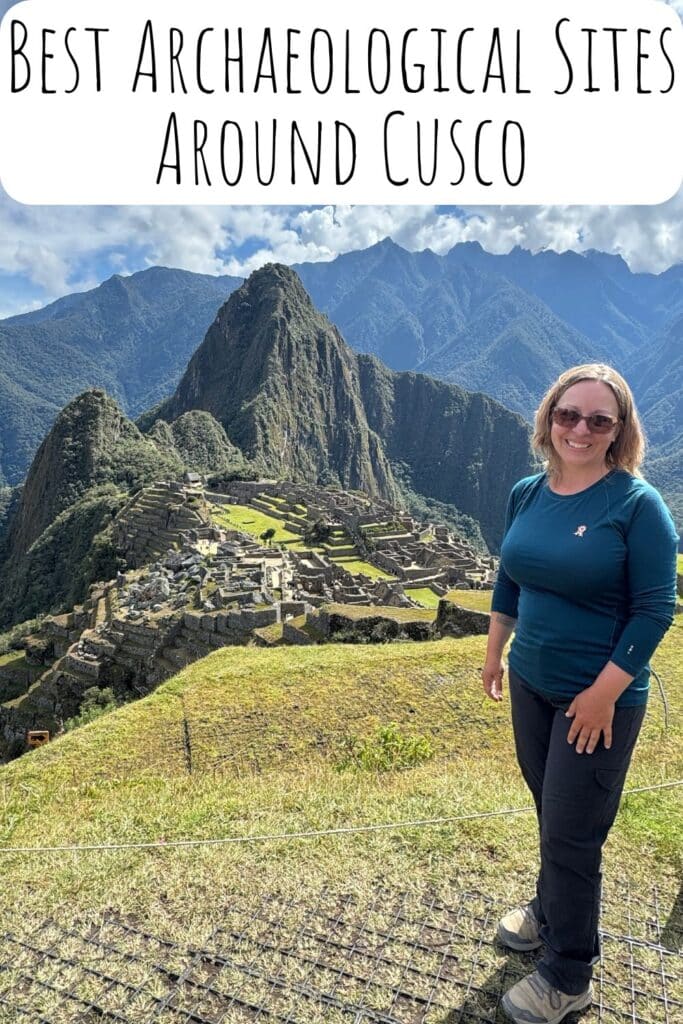
This post contains affiliate links.
Machu Picchu
Location: Machu Picchu District, Urubamba Province, Cusco Region, Peru (about 80 km from Cusco; accessible by train or Inca Trail trek)
Website: https://www.machupicchu.gob.pe/
Machu Picchu is Peru’s most iconic archaeological site and a UNESCO World Heritage treasure. This 15th-century Inca citadel sits high in the Andes, surrounded by misty peaks and lush cloud forest. Its stone temples, agricultural terraces, and ceremonial plazas showcase advanced Inca engineering and astronomical knowledge.
Highlights include the Temple of the Sun, Intihuatana stone, and breathtaking panoramic viewpoints. Whether you arrive by train or hike the Inca Trail, the experience of walking among these ruins is unforgettable. Machu Picchu isn’t just a bucket-list site—it’s a spiritual and cultural journey into the heart of Inca civilization. Consider booking a private tour–they handle booking all tickets and provide you with your own guide.
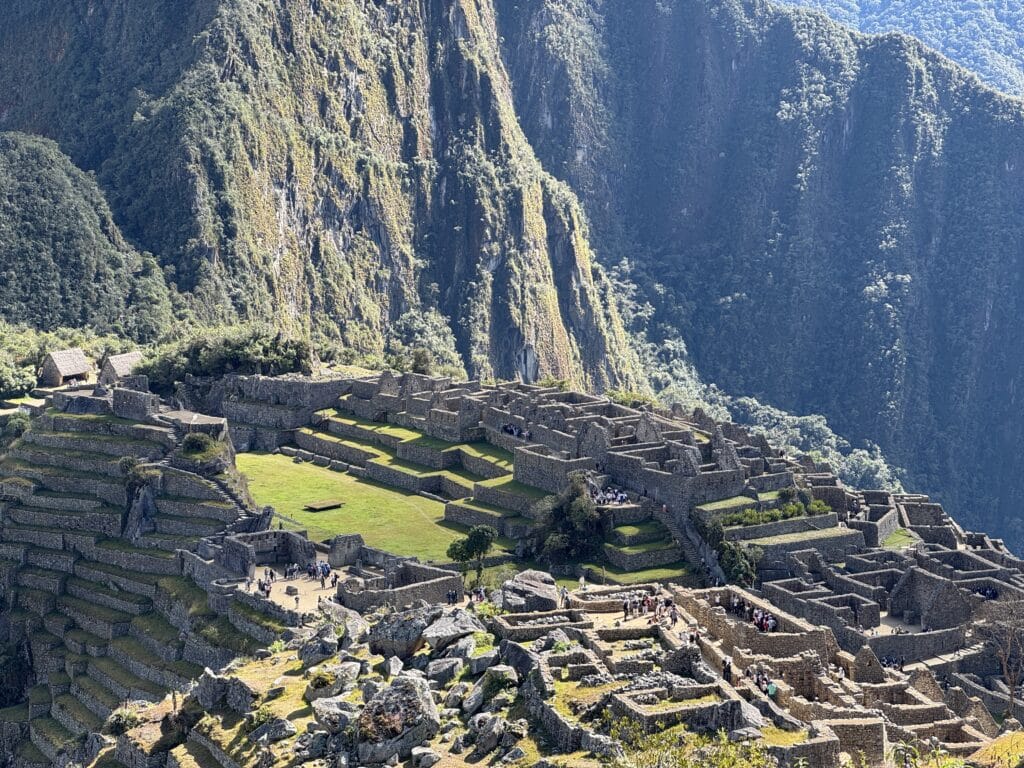
Puka Pukara (“Red Fortress”)
Location: On the upper road toward Pisac, about 7 km from Cusco
Website: https://cosituc.gob.pe/puka-pukara/
Puka Pukara is a well-preserved archaeological site just outside Cusco that once served as a military registry/tambo (rest station) for the Inca. Its name means “Red Fortress,” taking its hue from the red-toned rocks, especially vibrant in late afternoon light. The complex is made up of rugged stone walls, terraces, stairways, squares, and aqueducts, arranged over three ascending levels.
Though it lacks the refined masonry of some sacred Inca temples, its rugged style has its own character. Puka Pukara offers sweeping views over Cusco, Tambomachay, and beyond, giving a taste of Inca frontier life and strategic planning.
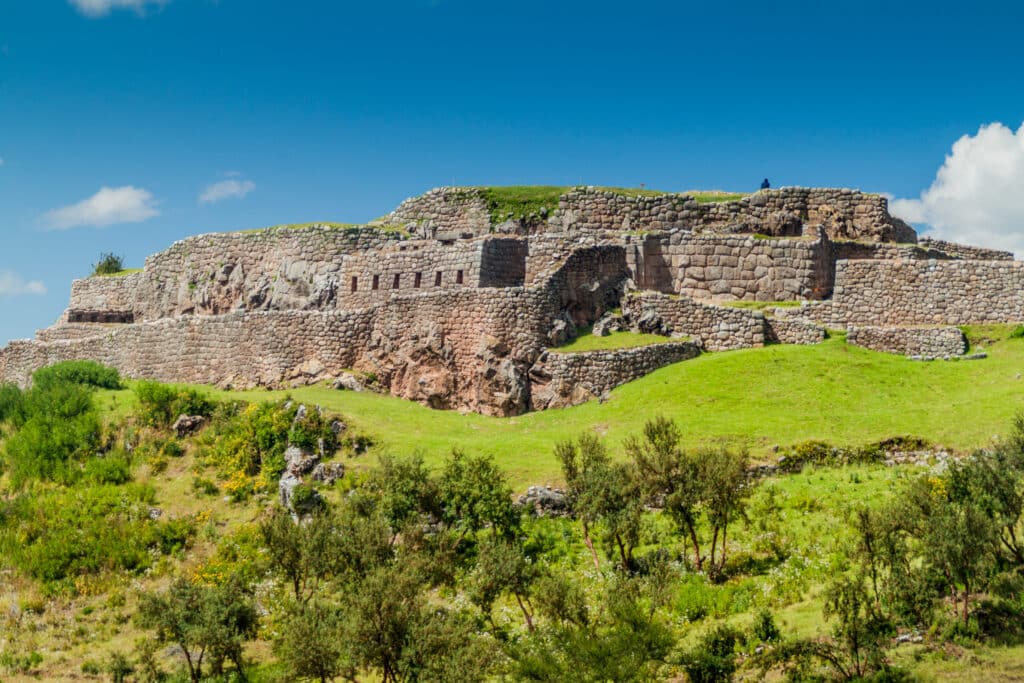
Tambomachay (The Baths of the Inca)
Location: About 5 km from Cusco city along the Cusco-Pisac road, Cusco Region, Peru.
Consider this tour that visits Tambomachay, Puka Pukara, and Sacsayhuaman.
Tambomachay is often called the Bath of the Inca. It’s believed to have been used for both water worship and as a ceremonial rest stop for Inca nobility. The site features liturgical fountains, carved stone water channels, and aqueducts that draw flow from springs; many still run today, offering a feel for Inca hydraulic mastery.
The stone masonry has a polygonal style and the layout on a slope makes for gentle terraces and platforms. Visiting Tambomachay gives a cool, shaded experience, especially in the afternoon, with beautiful views and a peaceful atmosphere not far from Cusco.
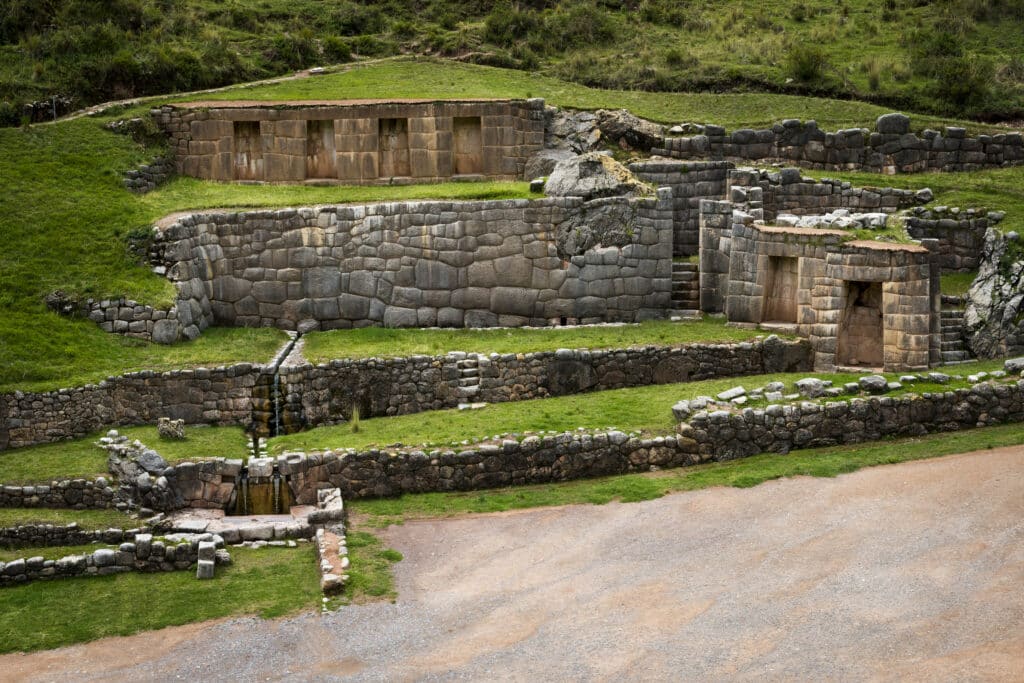
Q’enqo (Qenko Archaeological Complex)
Location: Socorro hill, about 4 km northeast of Cusco’s Main Square
Website: https://www.cuscoperu.com/es/viajes/cusco/centros-arqueologicos/qenqo/
Q’enqo is a mysterious Inca ceremonial complex whose name in Quechua means “labyrinth,” fitting given its carved zigzag channels, underground tunnels, amphitheater-style carvings, and ritual altars. Perched just outside Cusco, it served important religious functions: water features that may have been used in offerings, chambers for rituals, and ceremonial rock carvings.
Unlike more formal sites with agricultural terraces, Q’enqo’s intrigue lies in its sculpted stonework indoors and under earth, especially in the carved monoliths, niches, and carved passageways. It’s a fascinating stop for travelers who want to feel the mystery and spiritual depth of Inca ritual architecture.
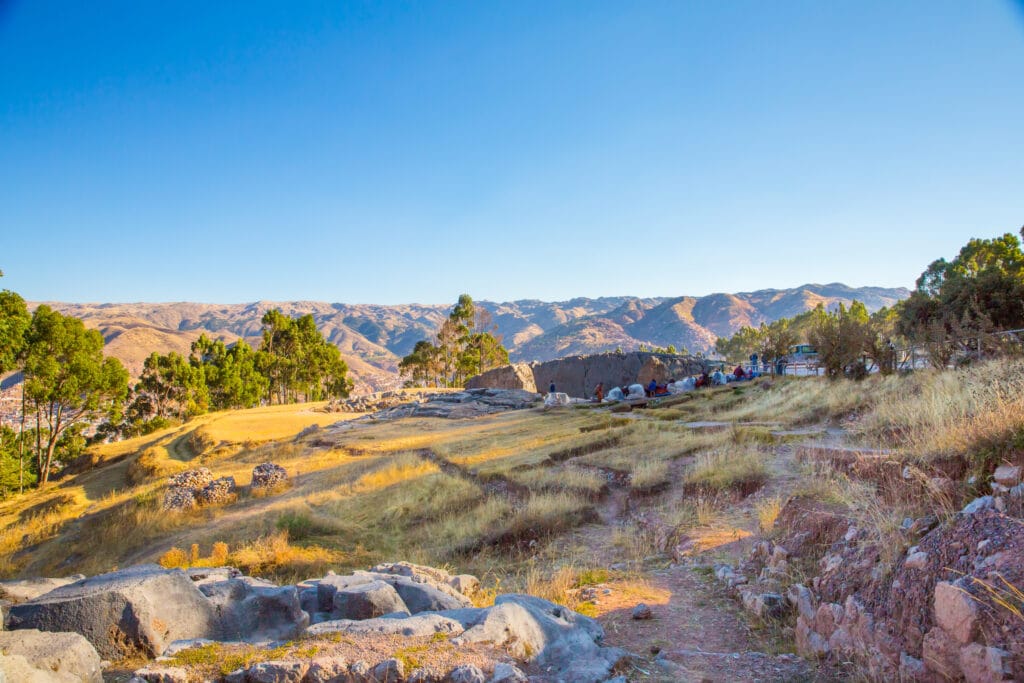
Sacsayhuamán
Location: Hill overlooking Cusco, just north of the city center, about 3-4 km from the Plaza de Armas.
Sacsayhuamán is a massive Inca fortress/ceremonial complex known for its monumental dry-stone walls, some stones weighing over 100 tons, joined without mortar. Its terraces, towers, gigantic zigzagging walls, and plazas dominate views of Cusco below, giving dramatic panoramas especially at sunrise or sunset.
It played both military and religious roles in Inca times: ceremonies such as Inti Raymi still take place there today. The craftsmanship in stone, the precision in fit, and the sheer scale make this site a must-see for anyone seeking to grasp Inca engineering and spiritual life. It delivers both awe and history.
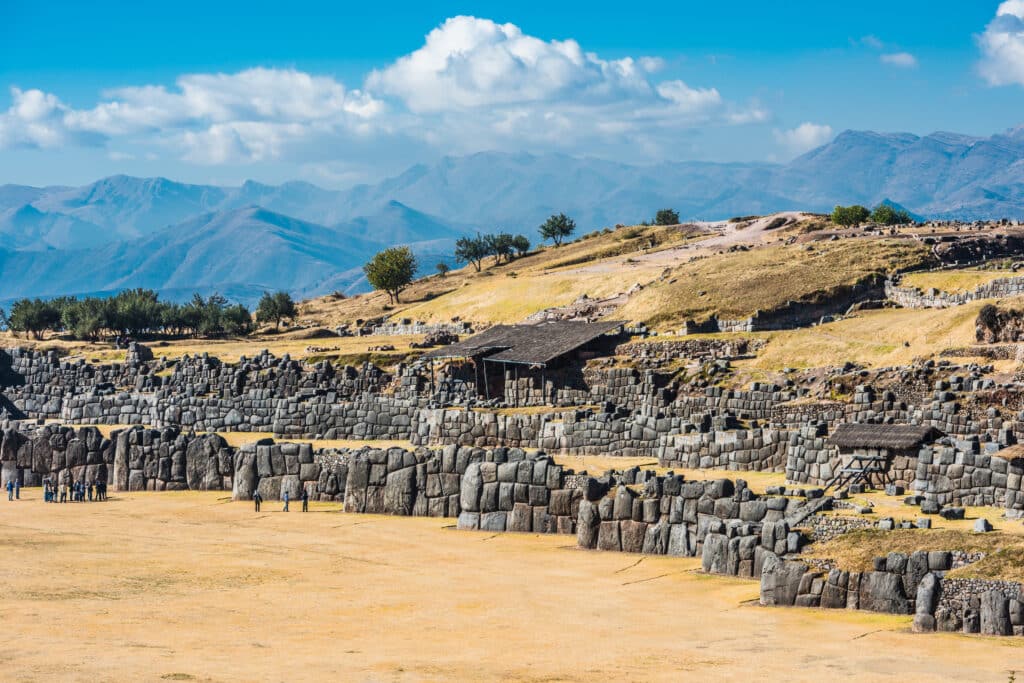
Tipón Archaeological Park
Location: Choquepata community, Oropesa District, Quispicanchi Province, ~23-25 km southeast of Cusco.
Consider this private tour.
Tipón is an Inca archaeological gem famed for its sophisticated systems of water channels, fountains, terraces, and ceremonial gardens. Built on a steep valley slope, it boasts hydraulic engineering that still channels spring water with precision through stone aqueducts. The terraces cascade down hillsides with agricultural platforms, and sun-altars (Intiwatana) offer views of Cusco in the distance.
It’s believed to have served as both an agricultural experimental center and a royal retreat. Because it’s less crowded than many of the more famous ruins, Tipón offers a more tranquil experience where you can linger and absorb the ingenuity and beauty of Inca design.
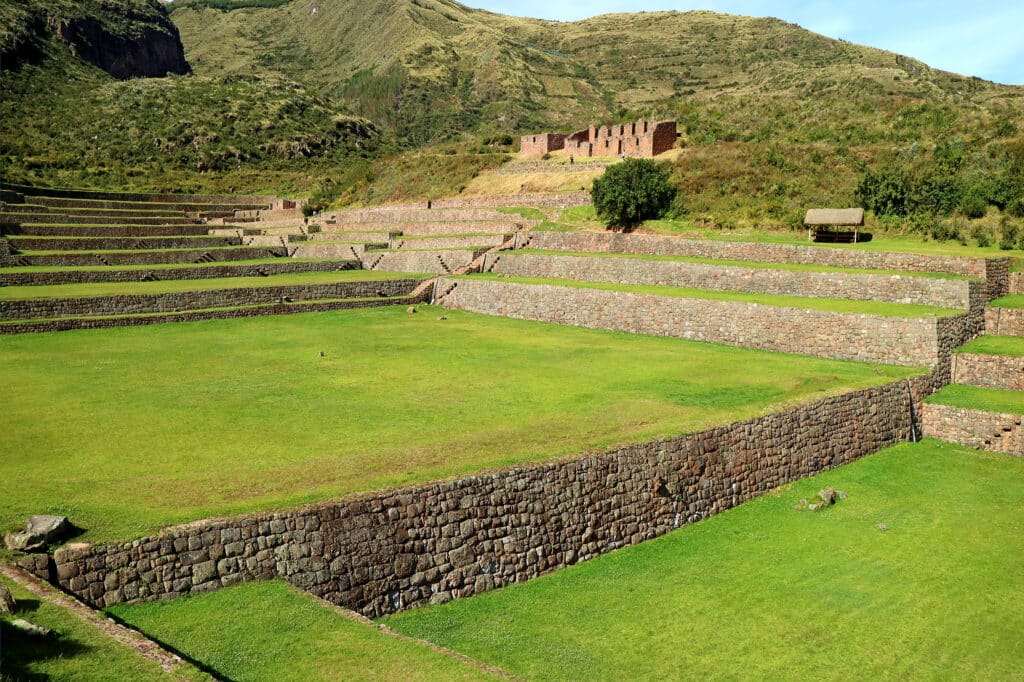
Pikillacta (Wari culture pre-Inca)
Location: 20 kilometres east of Cusco in the Quispicanchi Province
Website: https://cosituc.gob.pe/pikillaqta/
Pikillacta is one of the best preserved examples of pre-Inca urban planning in the Cusco region, built by the Wari culture. Once a city of dozens of buildings, streets, plazas, storerooms, and defensive walls, it covers some 50 hectares. The architecture is mostly stone masonry with long walls, multiple levels, and large public spaces.
Unlike many Inca sites which emphasize temples or agricultural terraces, Pikillacta gives a vivid sense of city life before the Inca: trade, administration, storage, and defense. Visiting Pikillacta helps round out the story of Andean civilizations by showing what came before the Inca golden age.
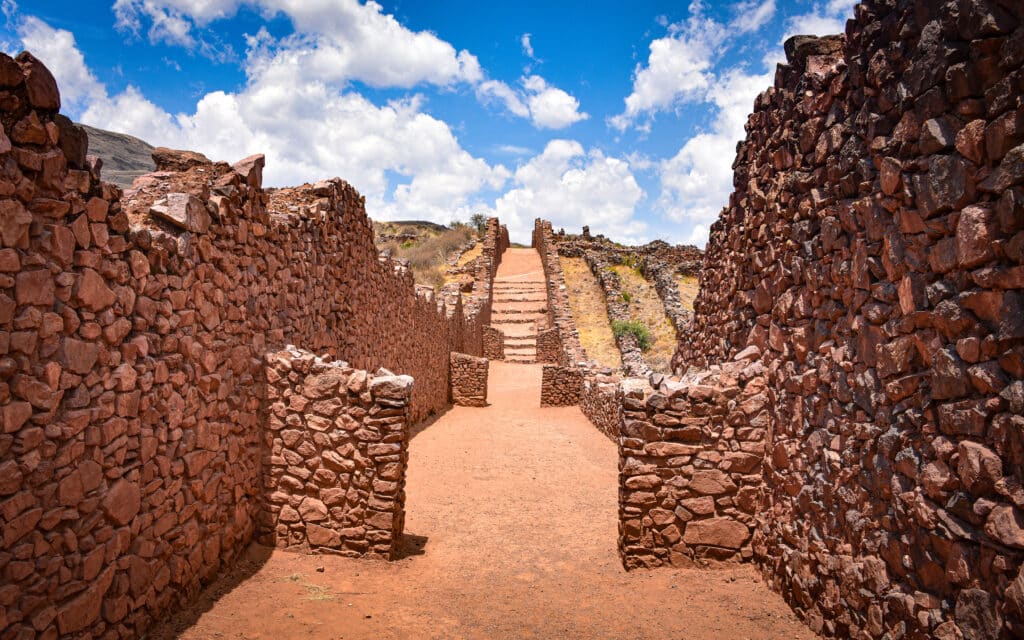
Exploring these sites is like stepping into a living history book, where every stone has a story to tell. Together, they offer a complete picture of Inca life—from sacred rituals to military strategy and scientific experimentation. Take your time visiting them and you’ll leave Cusco with a deeper connection to the Andes and its incredible past.







